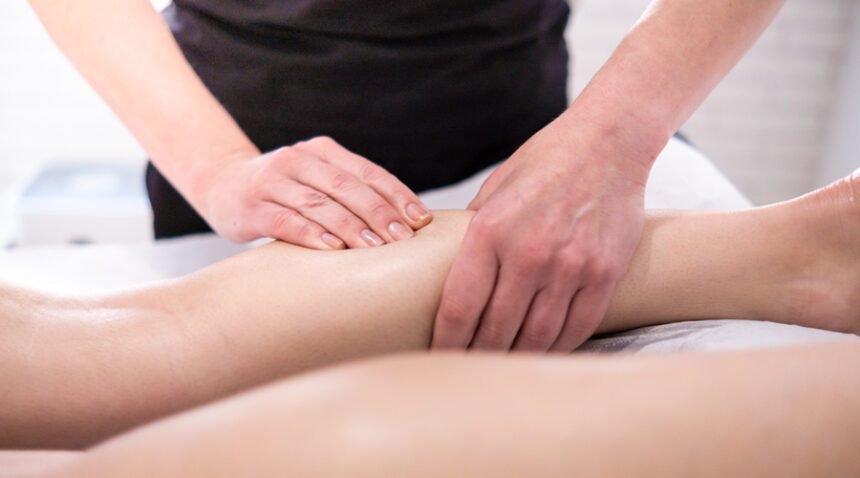Your body has an internal highway that helps you fight infection. An interconnected system of lymph nodes and lymph vessels manages lymphatic fluid, which seeps from the body’s tissues. The nodes filter the fluid of germs and damaged cells, and the vessels carry the filtered fluid to the chest, where it reenters the bloodstream.
Lymphedema, an accumulation of excess fluid that can cause swelling, occurs when the nodes or vessels are damaged. It affects about 10 million people in the United States; some are born with it, while most develop it when they have lymph nodes removed during cancer treatment. For example, about 1 in 5 breast cancer survivors and 1 in 3 gynecologic cancer patients experience lymphedema.
If you have swelling that can be painful or a feeling of fullness, heaviness or tightness in your limbs, your provider might recommend manual lymph drainage, also known as lymphatic drainage massage.
We spoke to UNC Health occupational therapist Nancy Reifsteck, a certified lymphedema therapist in outpatient rehabilitation at the UNC Rex Cancer Center, about the treatment.
What is lymphatic drainage massage?
During a lymphatic drainage massage, a therapist uses light and gentle hand movements to help lymphatic fluid that may have gotten stuck in one area move within the body.
“During manual lymph drainage, we draw the fluid to the lymph nodes,” Reifsteck says. “I liken it to removing a clog in the drain. You don’t want things backed up, so it’s a way to keep the fluid moving within the system.”
Reifsteck says manual lymph drainage is often done alongside compression therapy, in which a person wears a bandage, garment or pump to help control swelling. People are also taught exercises that can help keep their lymphatic system moving.
“People generally feel results pretty quickly,” Reifsteck says. “After one session, they can feel much better.”
Who benefits from lymphatic drainage massage?
Lymphatic drainage massage is most helpful if you have fluid buildup due to primary lymphedema, which is when you are born with a condition that affects your lymphatic system, or secondary lymphedema, which generally happens after cancer treatment or a traumatic injury. It also may help you if you have arthritis or a condition that causes inflammation or swelling.
Spas have begun offering lymphatic drainage massage, claiming that it can reduce cellulite and bloating and improve performance of the lymphatic system. Reifsteck says that a light massage may feel better than a deep-tissue massage to some people but that the true purpose of lymphatic drainage is to manage symptoms.
“Not everyone needs a lymph massage,” she says.
If you recently had treatment for cancer and are experiencing swelling or a feeling of fullness in the limbs, Reifsteck encourages you to speak to your doctor.
“If you’re having symptoms after cancer treatment that affect your quality of life, tell your physician and ask if they think therapy will help,” Reifsteck says. “We can provide treatment options as soon as you feel symptoms; you don’t have to wait for it to get worse if you’re not feeling well.”
Who can perform lymphatic drainage massage?
If you have lymphedema, it’s important to work with a certified lymphedema therapist, or CLT, during treatment. CLTs complete 135 hours of training to treat people with lymphatic system issues. A CLT can teach you or your caregiver how to complete manual lymph drainage at home, after your symptoms are evaluated.
“The approach will be specific to the ailment,” Reifsteck says. “Once we see what’s swollen, we can provide education on what nodes to stimulate and what vessels carry the fluid.”
Ideally, manual lymph drainage is done every day, which is why you should learn how to use the technique on yourself. Reifsteck says that CLTs can also help people find local massage therapists who are appropriately qualified to perform manual lymph drainage.
Swelling or a feeling of fullness, heaviness or tightness in the limbs could be a sign of lymphedema. Talk to your doctor about treatment. Need a doctor? Find one near you.

